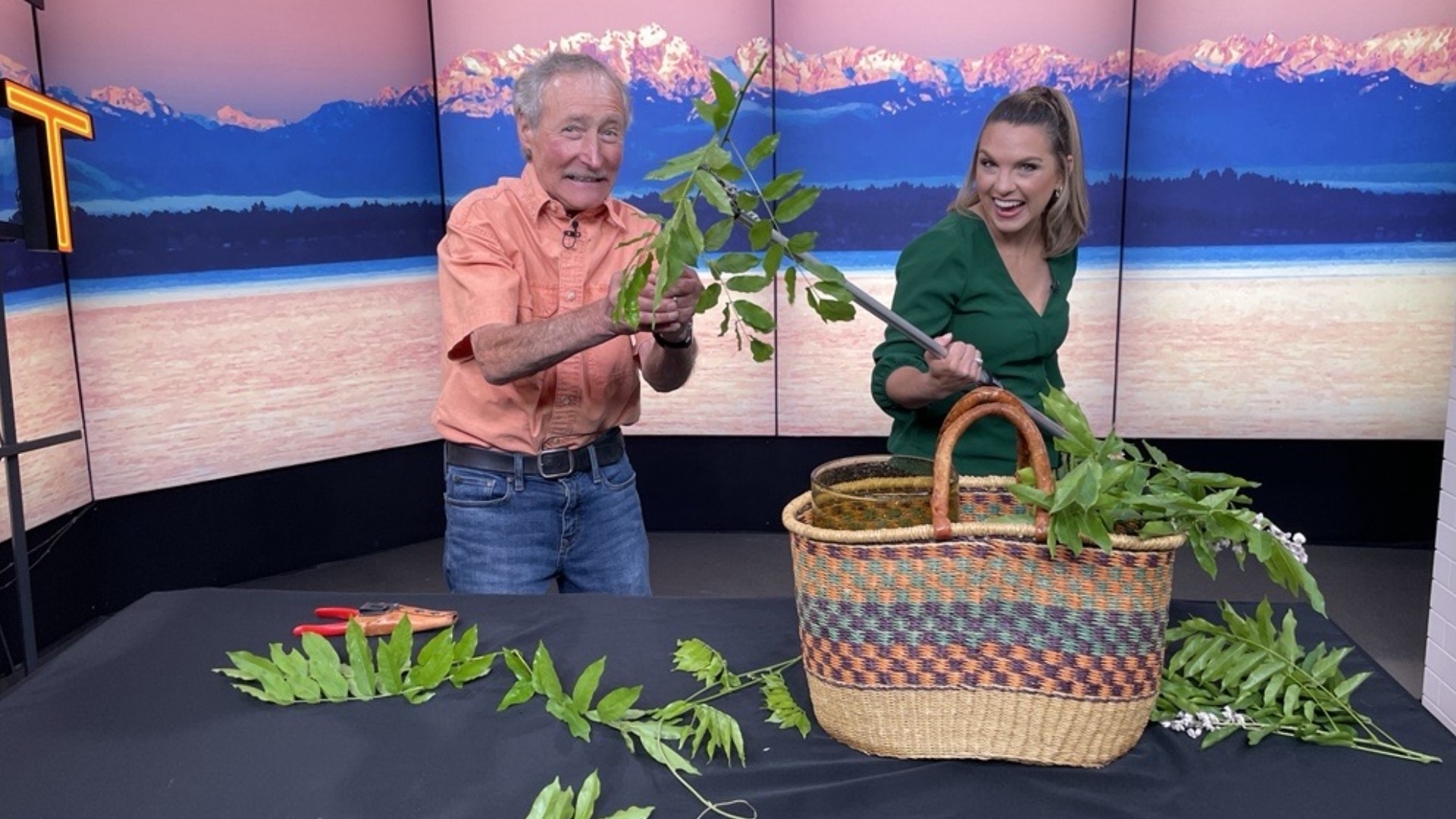Only plant a wisteria if you like to work!
I have a love-hate relationship with my wisteria. In May when it's in full bloom, with long hanging fragrant flowers, I definitely love the tweetle out of it. Visitors to our home garden go absolutely gaga when they see it flowering away in spring. It's growing on a trellis over our 20ft X 20ft patio and in spring there are almost always at least a thousand blossoms hanging from the vines. Just as beautiful, especially in winter, are the gnarled branches twisted around the pillars and side braces of the arbor.
The hate part is due to all of the work it takes to keep this behemoth from ripping the roof off my house and those of several of my nearest neighbors. The tendrils can grow 25 ft in one season, and they have an affinity for snaking under and ripping off roof shingles and rain gutters. Don't even think about planting a wisteria unless you enjoy working your hinder off, especially if (as I did) you plant it anywhere near a house, garage, tree, or anywhere else where it can find its way in to cause trouble.
Having said all of this, I admit I would not trade the wisteria that is growing over my patio for anything. No other vine can match the beauty and fragrance of the flowers, and the gnarled wizened vines wrapped around the arbor pillars look magnificent, especially in winter.
There are two species of wisteria typically available at local nurseries. Wisteria sinensis is the Chinese wisteria. The showy, foot-long, flowers open all at once before the leaves emerge, putting on quite a show.
My personal favorite, and the one growing on my arbor, is wisteria floribunda or Japanese wisteria. It winds in a clockwise direction and the strongly fragrant flowers appear just as the leaves open, with racemes that are considerably longer than those of Chinese wisteria (the record length for a raceme on Japanese Wisteria is almost 6 feet).
The key to getting keeping these monsters under control is to train the wisteria correctly when you plant it, and then constantly prune your wisteria to keep it from becoming a "kudzudian" monster. Right after planting, remove all but three vigorous stems and twist them around the support that the vines will climb. These vines will form the framework and must be tied in to hold them in place as they climb.
Be ruthless at removing all other growth. Never fight Momma Nature by trying to force the vines to twist in a direction other than the one that they naturally grow. The vines will revert to their natural direction and they will uproot the trellis and tie you to it! Cut the top of the vines as soon as they reach the top of the trellis. That will promote the development of strong laterals. Again, be ruthless: allow no more than three lateral vines to grow on each horizontal support. Twist the laterals around the beams, and then tie them in.
Wisterias normally bloom in mid-May, and soon after the blooming period is over, tendrils begin to grow out of the main structural vines that you've tied into the cross braces. For the first few years, while the Wisteria is being trained it won't bloom, because it is too young, but the tendrils will still begin to grow right after the normal blooming period is over. Each one of those little tendrils that is just starting to take off is capable of growing 25 ft in one season. The trick to instigate flowering is to cut back these rapidly growing tendrils to about six inches long.
This is called spur pruning. All the energy that would have gone into 25 ft of growth is captured in the six-inch spur, which stimulates flower bud production. Pruning in this manner usually results in flowering within four to five years after planting.
Of course, this laborious task must be performed every spring, and two or three follow-up trimmings per season are needed to cut back later emerging tendrils to stimulate flower bud production as well as to prevent them from ripping your neighbor's roof off.
After reading this, unless you want to work your hinder off for the rest of your life, you might want to consider planting well-behaved clematis on your structure instead!
Segment Producer Suzie Wiley. Watch New Day Northwest at 11 AM weekdays on KING 5 and streaming live on KING5.com. Contact New Day.

